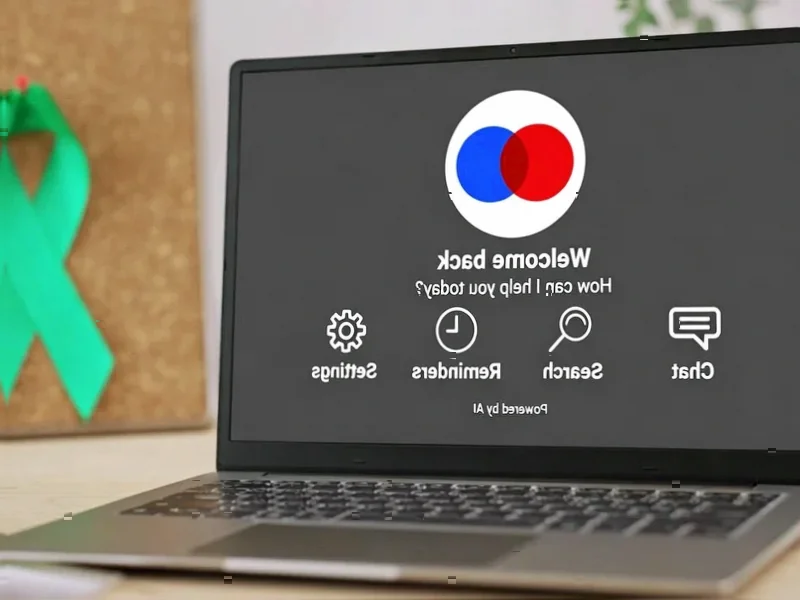According to Forbes, traditional procurement approaches are failing organizations attempting to implement AI transformation, with the fundamental problem being that AI requires dynamic, evolving operating models rather than static deliverables. The analysis suggests it may take five to ten years before companies establish “standard” AI operating models, creating significant challenges for traditional procurement methods that assume stability and clear deliverables. Organizations are struggling because they lack sufficient engineering talent, change management expertise, and organizational design skills to navigate AI transformation alone, requiring multiple partners including strategic consultants, systems integrators, and specialized experts. The traditional approach of decomposing work into neat categories and bidding them out creates dangerous mismatches when the future state remains undefined and constantly evolving.
Table of Contents
- The Legacy Procurement Problem in Technology Implementation
- Why Operating Model Transformation Trumps Technology Deployment
- The Vendor Selection Trap in AI Implementation
- Building a Collaborative Procurement Framework
- Broader Industry Implications and Market Shifts
- Practical Steps for Evolving Procurement Practices
- The Future of Technology Procurement
- Related Articles You May Find Interesting
The Legacy Procurement Problem in Technology Implementation
Traditional procurement models evolved during eras of predictable technology implementation, particularly with enterprise resource planning systems and early cloud migrations where target states were well-defined. These models prioritize cost optimization through competitive bidding, standardized RFPs, and clearly scoped deliverables. The fundamental assumption has always been that organizations can accurately predict what they need before engaging vendors. This approach worked reasonably well for technologies that represented incremental improvements rather than transformational shifts. However, artificial intelligence represents a fundamentally different category of technology that disrupts this entire framework by requiring continuous adaptation and discovery throughout implementation.
Why Operating Model Transformation Trumps Technology Deployment
The critical insight many organizations miss is that AI’s value comes not from the technology itself but from how it reshapes business operations, customer interactions, and internal processes. Companies that focus solely on acquiring AI capabilities without redesigning their operating models inevitably create expensive technical solutions that deliver minimal business value. This requires deep expertise in change management and organizational design that most internal teams lack. The real challenge isn’t building AI systems but integrating them into workflows in ways that fundamentally improve how work gets done, how decisions are made, and how value gets delivered to customers.
The Vendor Selection Trap in AI Implementation
Organizations frequently fall into the trap of evaluating AI vendors based on their technical capabilities and implementation methodologies rather than their ability to adapt to the company’s evolving needs. This backward approach prioritizes the vendor’s operating model over the organization’s transformation requirements. The most successful AI implementations involve vendors who can co-create solutions while the target operating model itself remains in flux. This requires a fundamental shift from transactional vendor relationships to strategic partnerships where both parties share risk and reward in discovering the optimal path forward.
Building a Collaborative Procurement Framework
The transition to collaborative procurement requires rethinking everything from vendor evaluation criteria to contract structures and performance metrics. Instead of fixed-price contracts with detailed scope documents, organizations need flexible agreements that accommodate discovery and adaptation. Evaluation criteria should prioritize adaptability, integration capabilities, and cultural alignment over technical specifications alone. Procurement teams must evolve from cost-focused negotiators to strategic partners who understand the unique challenges of AI transformation and can structure relationships that support iterative development and continuous learning.
Broader Industry Implications and Market Shifts
This procurement evolution will inevitably reshape the consulting and technology services landscape. Traditional systems integrators who rely on fixed-scope engagements will struggle unless they adapt their business models, while agile consultancies capable of co-creation and adaptive delivery will gain significant market share. The entire business model for technology services may need reinvention, moving away from time-and-materials or fixed-price engagements toward value-based pricing and shared-risk arrangements. This shift represents both a massive challenge and opportunity for service providers who can demonstrate genuine transformation expertise rather than just technical implementation capabilities.
Practical Steps for Evolving Procurement Practices
Organizations can start this transition by piloting new procurement approaches for smaller AI initiatives before scaling to enterprise transformations. Key steps include developing new vendor evaluation frameworks that prioritize adaptability, creating flexible contract templates that accommodate scope evolution, and training procurement teams on the unique characteristics of AI projects. Companies should also consider establishing cross-functional evaluation teams that include business leaders, technology experts, and procurement specialists to ensure alignment between technical capabilities and business transformation objectives.
The Future of Technology Procurement
As AI continues to mature, we’ll likely see the emergence of new procurement models specifically designed for transformative technologies. These may include innovation partnerships with shared IP arrangements, outcome-based pricing models tied to specific business metrics, and consortium approaches where multiple organizations collaborate on developing shared AI capabilities. The organizations that master these new procurement approaches will gain significant competitive advantage by accelerating their AI transformation while minimizing the risks of failed implementations and wasted investments.
Related Articles You May Find Interesting
- Apple’s $109B Services Empire Faces Global Legal Reckoning
- Nuclear Renaissance Meets AI Boom: Inside Constellation’s 80% Surge
- From Burden to Advantage: How Smart Companies Are Winning Through Compliance
- Apple’s $4 Trillion Milestone: Beyond the iPhone to Services Supremacy
- The M&A Paradox: Why More Deals Create More Risk



